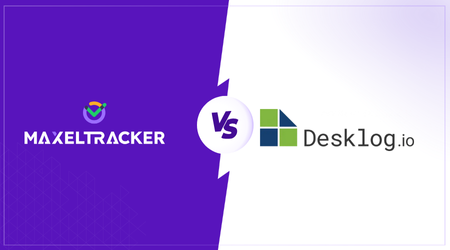

Productivity is essential to any successful organization. It analyzes how well your company produces things or services and is often linked to profits and revenue.
However, how can you determine whether your employees are producing at their highest level? You don't want to take any chances in this area. To assess performance and identify areas for development, productivity measurement, and calculation skills are essential.
With helpful tips and doable tactics along the way, we'll take you through a methodical approach to productivity calculation in this tutorial. All set to begin? Now let's get started.
Productivity is a business performance metric that indicates how well the organization accomplishes its goals. It considers the quality and worth of the work produced in addition to the number of hours worked or tasks completed.
If you're a manager, employee, or business leader, knowing how to assess productivity can help you make better decisions. You're not only making the business more competitive when you take action to increase productivity. Additionally, you are laying the groundwork for engagement and motivation.
"The relationship between productivity and employee satisfaction is among the most underrated features of productivity. People recognize the importance of their contributions when managers actively discuss productivity with their team members. Even more productivity and a happier workplace result from this.
The most effective approach to assessing productivity? To begin, use the following simple formula to measure the relationship between inputs and outputs:
Total Output / Total Input Productivity
Although the precise formula may change based on the situation, the basic idea is always the same: Divide your company's output (what it produced) by its input (what your employees did or what resources were required to get there).
Here’s what each component means:
1. Output: This is the quantity of things or services produced, such as the quantity of products manufactured or the amount of money made from sales.
2. Input: These are factors, including the amount of time spent on activities or the money allocated to a project, that have a direct impact on outcomes.
3. Productivity: This indicates how well and efficiently your employees are producing outcomes throughout a predetermined time frame.
It's crucial that we stay clear of a few common misunderstandings to be able to determine productivity levels accurately. First, avoid the mistake of focusing just on output volume without taking quality into account. Employees may use shortcuts, for instance, if they are working toward a productivity goal that is only dependent on the quantity of goods produced. In this case, the haste could lead to faulty goods. The amount won't matter if the products are of poor quality and are likely to be returned by buyers; your estimates won't accurately reflect productivity.
Secondly, don't undervalue context. Since productivity metrics can differ greatly between sectors and industries, it's important to take contextual information and industry benchmarks into account.
Productivity, which measures how much an employee produces in a specific amount of time, is crucial for every firm. In actuality, the more output employees produce, the more money the company makes. Remember that a productive company's primary goal is to complete more work in less time.
Your employee's performance may be adversely affected by external issues such as inflation, competition, and the state of the national economy, in addition to internal distractions. Measuring employee productivity by department, team, or person can help your firm identify areas for improvement, even while you can't manage everything.
There are various methods for determining productivity for each team and person as well as for your company as a whole. Take into account a number of crucial factors when deciding how to calculate productivity in each scenario:
In industries like manufacturing and retail that create physical products, the quantity of units produced or sold can be a useful component of the productivity calculation. However, in the IT and service sectors, you might need to focus on more subtle metrics, such as the number of important positions finished or milestones achieved. Be ready to adjust department-specific numbers as well. Although it might make sense for your sales employees to evaluate productivity based on sales, marketing will require a different indicator, such as the proportion of goals met.
Do you work in a well-established sector with well-defined productivity standards? Measure against those goals if that's the case. These are particularly crucial to take into account when figuring out tangible results like the quantity of support tickets or customer service calls that are answered. If not, use internal data to establish your own organizational benchmarks.
You are responsible for quality and efficiency when calculating employee productivity. Efficiency provides you with the quality of that production, whereas the simple productivity calculation tells you how much is being produced. Burnout, work hours, and distractions can all have an impact on how well your employees are functioning. Efficiency and productivity go hand in hand, thus it's critical to consider both.
Productivity can be calculated using a variety of metrics. Thus, we have selected the most appreciated ones.
This is used to determine the average amount of time an employee spends working, including both active and passive time. It's calculated by dividing the number of employees by the productive time.
The ratio of productive time to total time is shown by this metric. It's calculated by taking the entire number of hours in a day and dividing it by the number of productive hours.
The average number of minutes that employees spend working continuously is indicated by the productive session.
How many hours a day on average can your staff work productively? Does your team's level of production differ significantly? By comparing the daily productivity rate to the prior weeks, you may determine whether the performance of your personnel is above or below average.
There are several different ways to calculate productivity depending on what metrics you have to work with.
The simplest version of the productivity formula might be the most effective for certain departments and sectors. Just divide the quantity of goods or services produced by the total number of hours put in over a predetermined amount of time.
Consider the scenario where your staff produced 15,000 items over the previous quarter, requiring 1,500 hours of labor. In this case, the computation would be 15,000/1,500 = 10 units per hour.
This approach does not account for the quality of the items, but it can tell you how much is produced each quarter. It is effective for simple productivity estimates, but in other situations, a different strategy including more complex factors such as worker feedback or desired outcomes, may be needed.
Objectives can also be used in situations where precise measurements are impossible, such as the quantity of units produced. Alternatively, figure out what proportion of your personnel have achieved the desired outcomes. This approach is effective for teams with well-defined goals and deadlines for reaching them. Using the goals-based approach regularly, ideally monthly or quarterly, can help you learn how to support staff most effectively.
Let's take an example where your IT support desk surpasses your weekly target of 100 tickets resolved to account for 120. By calculating the achievement/goal x 100, you can determine productivity by looking at the percentage of goals that are met. So, 120/100 means 120% of the goal in this instance.
Direct employee feedback is gathered using the 360-degree technique. The first step in this approach is to encourage managers and team members to rate how their coworkers have contributed to the company's performance and to offer their opinions about their peers.
Using numerical ratings as scores for each employee's productivity would allow you to quantify feedback. In a survey or meeting, for instance, if ten employees were asked to rate the productivity of their colleagues on a scale of 1 to 5, each would receive a minimum score of 9 and a maximum score of 45. When an employee's peers give them a cumulative score of 40, it means they think they're very productive. It's crucial to remember that this information could be biased due to individual preferences or a lack of understanding about how other people work. Workers might give friends high scores or might not interact with certain individuals often enough to comprehend their work habits.
This method involves simply dividing the total number of employees working during a certain period by the money generated during that period. Even though this method's calculation is simple, the results can be highly informative, particularly if you recalculate it frequently. The more money your company makes per worker, the more productive it is.
For instance, your revenue per employee would be $1,000,000/200 = $5000 per employee if you had 200 employees and made $1 million annually. This method's drawback is that it doesn't provide you with an idea of individual productivity, making it impossible to pinpoint workers who are exceeding or falling short of goals.
The best software for businesses that require a high level of accuracy is a productivity tracking tool. At the individual and team levels, these solutions automatically gather employee activity data to demonstrate how, when, and where workers are most effective. Instead of doing calculations by hand in relation to standards or objectives, you may observe precisely how productivity evolves over time and the variables that impact it.
An ultimate platform to start if you're searching for a quick and simple approach to measuring real time activities at your organization is MaxelTracker's live screen monitoring software. Get a demo to see how you can start producing thorough productivity reports right now.
Calculating productivity isn’t just about numbers—it’s about understanding how work gets done and where there’s room for improvement. By using the right formula, setting clear goals, and applying suitable methods across departments, you can build a stronger, more efficient workplace.
Whether you’re managing a growing team or leading an established organization, measuring productivity helps you stay on track, make informed decisions, and support your employees better. From tracking daily output to analyzing efficiency trends, each insight brings you closer to better performance.
If you're ready to simplify the process and get real-time data without the manual effort, tools like MaxelTracker can make a big difference. Try it out and see how easy it is to turn productivity data into smart action.
👉 Sign up now at MaxelTracker.com and start transforming your team’s productivity today! 🚀
👉 Explore our pricing plans and features to find the perfect solution for your team’s productivity needs! 🚀
Related Blogs

15 Remote Work Challenges Every Business Owner Faces — And How to Solve Them
Remote work rings a familiar bell, and it offers flexibility and global reach as well. But for CEOs, HR heads, and other important position holders across countries like USA, UK, Canada, or UAE, it is often the bringer of stress.

Insightful Alternatives & Competitors
Looking for an alternative to Insightful that offers a more tailored approach to workforce productivity and employee monitoring? We’ve got you covered.

Desklog Alternatives & Competitors
MaxelTracker is an all-in-one workforce platform that tracks time, monitors activity, and delivers deep productivity insights, giving you more than just project and task logging.